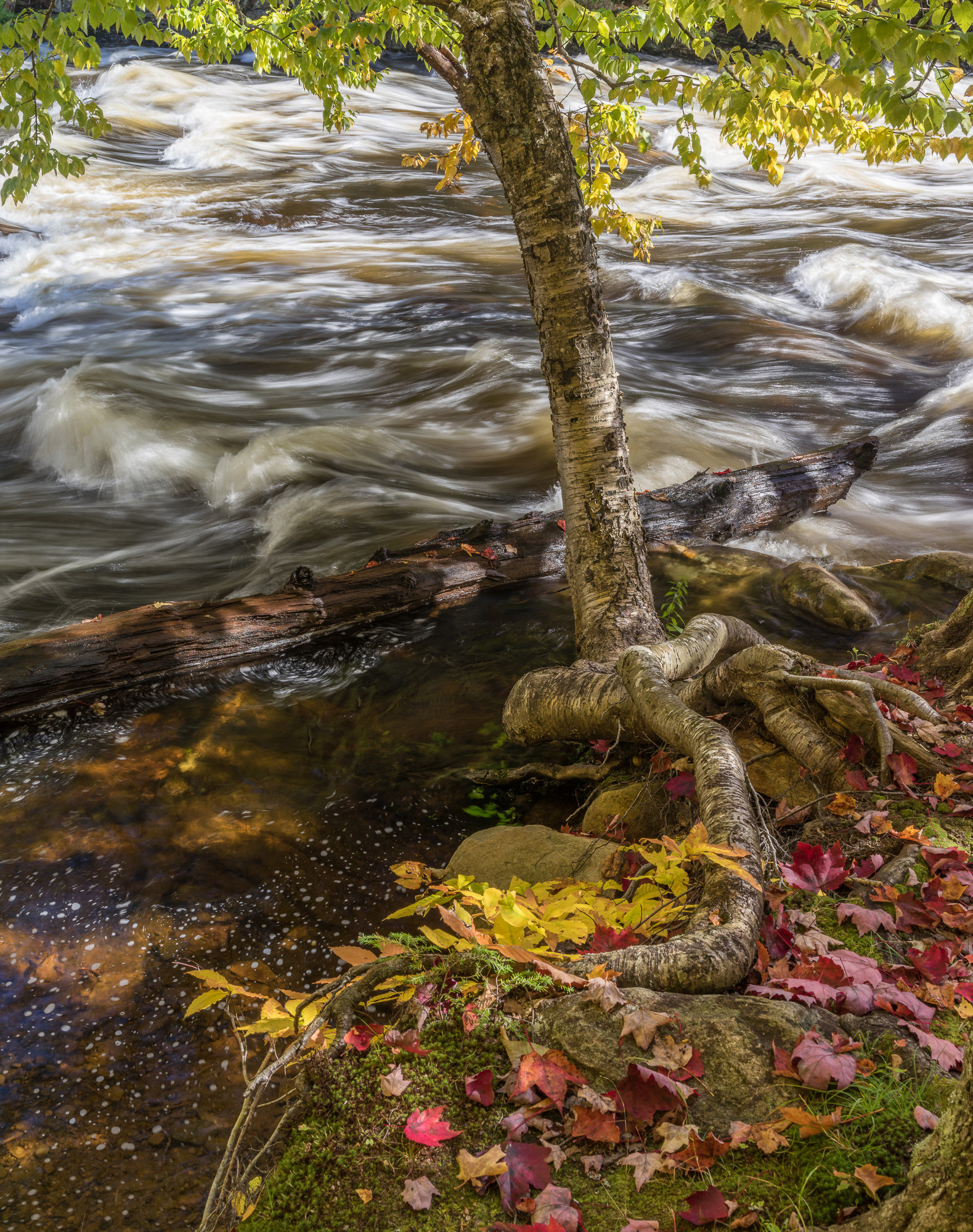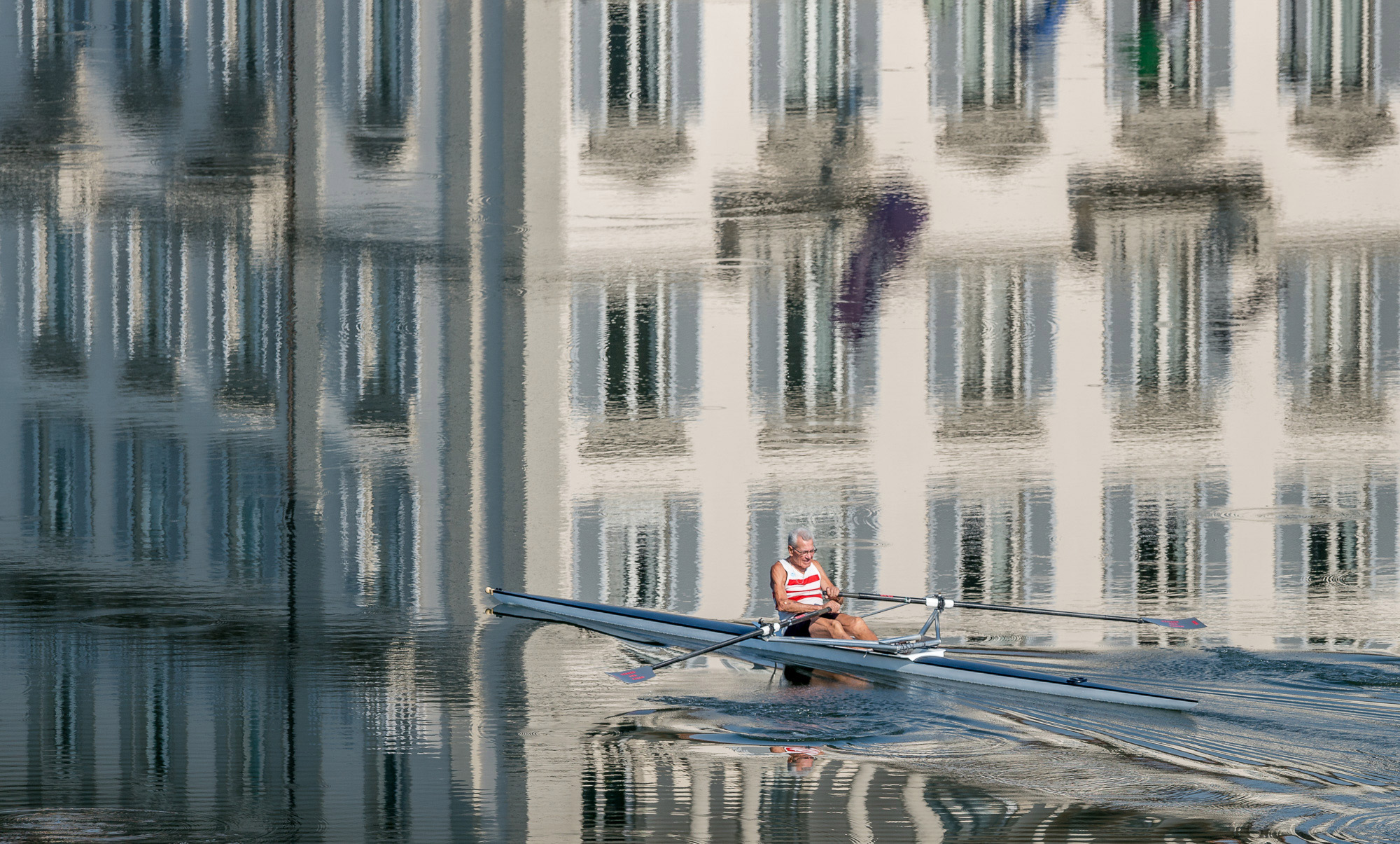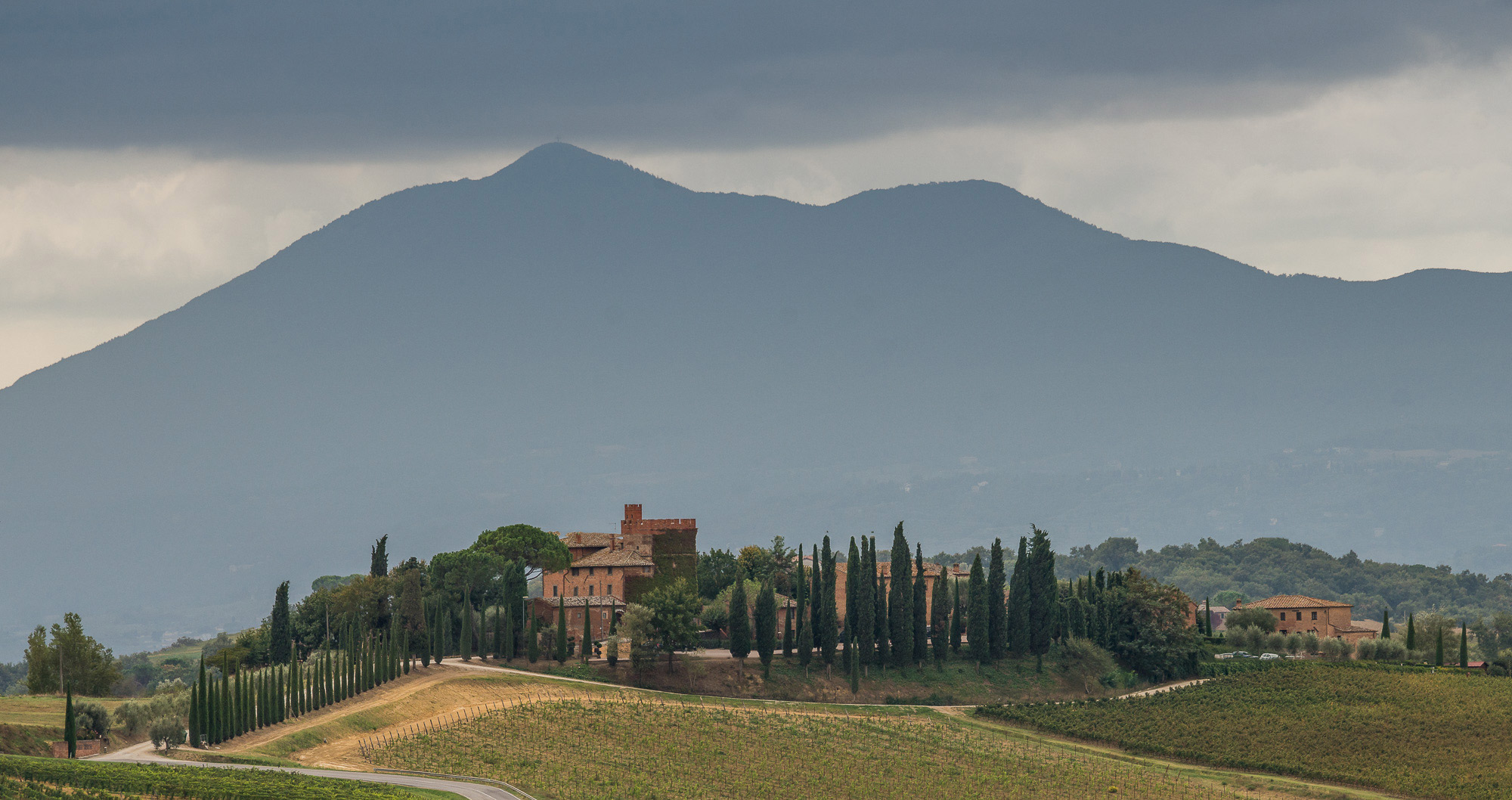Canon’s R Mirrorless – Things They Got Right and Things They Got Wrong


The Mirrorless War is underway. In the last few weeks, we have seen announcements by Nikon, Fuji and Canon. We have also heard a number of rumors, such as Panasonic and Olympus are thinking about going full frame in the future. It’s exciting times, fun times and somewhat confusing times as photographers scratch their heads and try to make sense of what is being introduced.
Michael Durr, Lula’s videographer and myself, were invited to the Canon EOS-R launch in Hawaii. The launch of a mirrorless camera by Canon is really big news. It’s a switch in direction for a company that has been built on both SLR and DSLR for several decades. A move to mirrorless is the stepping stone to the future for the company. In ten years with the sensor technology going the way it is, and the inevitable introduction of global shutters, the only cameras that may be available will be mirrorless. And, those ten years are going to happen very fast.
Canon is in the war now and, with their first introduction to mirrorless, they have made a huge advance but may have also made a few missteps. In the accompanying video, I talk about the Hits and Misses in my opinion of the EOS-R Camera. This is the first part of a two-part series on the Canon R camera. The next segment is a rather lengthy deep dive into the camera itself. I sat down with Brandon Chin, a tech specialist with Canon, and together we explore all aspects of the camera. We look at menus, interface, and lenses and I ask some tough questions. This video will be published soon so keep an eye out for it!
Hits And Misses Video
Hits and Misses
I went to Hawaii with a lot of expectations. One would think with the mirrorless bar being set so high by Sony and others that Canon would know what they needed to meet and exceed those expectations – to have a winning camera on their hands. Did they do this? Well, in some ways they did, and in other ways, definitely not. However, like with all things, evolution may make up for the things that are misses and eventually, Canon may have a camera with more hits than misses. Let’s remember that when Sony first introduced a full-frame mirrorless camera, they had a ton of misses. Mostly, all these misses have been overcome and exceeded in many ways with the second and especially the third generation of Sony cameras. The same could happen with Canon. So as I have said before with Nikon, we need to give them a chance.


Canon designed a beautiful camera. It feels like a Canon and it feels good in my hands. There is a good size grip and the texture of the body has just the right amount of non-slip feel to it. The buttons seem logically placed and my thumb on the back of the camera rests comfortably without hitting any dials or buttons. They deserve a HIT for the overall ergonomics of design.
When looking at the camera, I see they have removed a lot of buttons and dials that were present on earlier models and they also took out the joystick. They have made what buttons there are programmable through an easy-to-use menu system. The menu system is well designed and pretty familiar if you have used Canon cameras in the past. The touchscreen rear screen is brilliant, large and works well. I found it very easy to make menu selections and change settings with the rear touchscreen. So this is a HIT.


However, now let’s look at a MISS. While the touchscreen is nice, there should be a simple system to access the same menus without having to use the touchscreen. What happens when you are wearing gloves? You can use the multi-function dial on the rear of the camera, but I am so accustomed to a joystick, I find myself reaching for it to navigate. Why in the world when every other camera maker has adopted joysticks, would you NOT offer one, much less take the one that has been on other cameras away? A MISS in my opinion.


Any company should know by now, you only make customers upset when you take away things we loved. Apple took away the SD card reader as well as other things from their latest line of laptops. I still haven’t forgiven them for that. I am not about to forgive Canon for not having a joystick. Put the joystick back. Canon left a big blank spot on the back of the camera where the joystick could have easily been placed. Maybe in the future, they will put it back.
While we are on the MISSes, let’s talk about the single card slot. I’m just dumbfounded about this as I was on the Nikon Z camera. Once again, when you are designing cameras and every other camera has dual card slots, where in the world would you think it would be a good idea to introduce a new camera with a single card slot? My friend Tony Northrup has a video where he lost images and video because the card slot failed. A big MISS in my opinion on this one.


A very clever new idea and a definite HIT is the lens Control Ring. On their new RF glass lenses, Canon included a new programmable Control Ring. This is brilliant as it allows you to use the ring for whatever you want. It could be for changing ISO or exposure compensation. I can see where this could be great once you get the hang of it.


On the introduction of this camera, Canon is offering only 4 lenses: the 28-70mm f/2, 24-105mm f/4, 50mm f1.2 and the 35mm 1.8 macro. All of these, as well as future RF lenses, will have this new Control Ring.


One of the main selling points of the new R camera is the capability to use all the present EF lenses. To do this, Canon has introduced 3 adapters. One of these adapters, and most likely, the one that will be most popular sports Control Ring. This gives the existing EF glass using this adapter the same control ring use as the new RF lenses. Also, Canon showed us a Drop-In Filter Adapter. This is very cool and a . as it allows you to drop in a polarizer or variable neutral density filter at the rear of the lens. Now a big lens like long telephotos or the 11-24mm that has a round glass front element can be used with filters on the Canon R. This is a HIT.


A giant MISS, in my opinion, is the sensor. While the sensor is a good one, it is a sensor that has been around for four plus years. It’s the same sensor that is in the Canon 5D IV. When there have been so many sensor technology achievements in the last few years, why would you put an old sensor in a new state-of-the-art camera?
To make matters worse, there is no IBIS (In Body Image Stabilization). Another big MISS. Just about every camera being released today has IBIS in the camera body. As a long time mirrorless shooter, I have come to rely on IBIS as a tool that allows me to shoot better. A 5 stop IBIS is incredible in action. Low light, low shutter speed hand-held photography is possible like never before. Canon is relying on lenses with IS built into them as well as what they say is digital stabilization on the sensor. Excuses are what I call this.


Also, a big MISS is the frames per second capture rate. You can capture 8 frames per second in single focus mode and 5 frames per second in CF (servo) mode. Certainly, in today’s world of high frame rates per second, this just won’t do.


Canon has made a decent vertical grip though. A HIT. The grip holds one extra battery and has FN buttons, dials, and a shutter release. It feels good in the hands and seemed to work well. For me, this would be a must-have accessory.


Focusing on the rear touchscreen is both a HIT and a MISS. Oh, how I miss the joystick (see above). With touchscreen focusing, you choose the kind of focus area you want, then touch the screen where you want it. I found it awkward to move my finger between my face and the camera to achieve focus when looking through the viewfinder. I found it nearly impossible while holding the camera vertically while wearing a neck strap. See the above video to see what happens. Additionally, I have no idea at this time whether the touch screen and the Multi-Function Bar will work while wearing gloves. For a photographer like myself, who spends a lot of time in polar regions, this is a must-have. I will test it in the coming weeks and get back to you.


A neat feature that gets a HIT is what happens when you turn off the camera and take off the lens. Rather than leave the sensor exposed, Canon closes the shutter to protect it. This is great if you are in dusty environments. As long as the camera is turned off, the shutter closes. This will allow many photographers to feel more comfortable changing lenses in harsh environments.
The viewfinder is really a pleasure to look through. It feels almost DSLR-like, which I’m sure Canon was hoping for when trying to sway many Canon DSLR owners to mirrorless.


The rear screen is also gorgeous and it is a “flip-outy” screen. You can turn the screen around and do vlogging, although I’m not sure why you would do that, as you’d have to be super strong to hold this heavy camera and lens for any length of a time. But, I’ll give them a HIT for this one.
If you are a vlogger and want to shoot 4K video, you’ll be shooting at a 1.7 crop factor. A big MISS. Once again, Canon knows that Sony and others use the full width of the sensor. Shooting with a 1.7 crop factor changes the whole feel of the video experience and you’d have to use a really wide angle lens to truly use it for vlogging.


Canon hits out of the park with AF, though. The AF is very fast and seemed to hit the mark all the time. The difficulty was getting the mark where I wanted using the touchscreen. They get a HIT for AF as they are using just about the whole screen, edge to edge. They are claiming there is 5,655 AF points. You can’t see these though as they are using just about every pixel. You can set different focus box sizes though and utilizing the many AF points inside any of these boxes contributes greatly to the speed and accuracy of the AF. A HIT for AF (kind of).
My lukewarm HIT for AF comes with Eye Detect AF. Sony made Eye Detect AF popular and fun to use and the new Fuji X-T3 does an amazing job with Eye Detect AF. Essentially when Eye Detect AF is activated, it finds a face in the frame, and then, after locating a face, a smaller AF box locks onto the eye. In CF on a Sony and now the Fuji, this box stays locked on the eye and doesn’t let go. This means you can shoot wide open and know that the eye will be in focus. The Canon R has Eye AF but only in Single Focus mode. To me, that’s kind of useless unless you have your subject locked down and not moving. So, Canon this is a MISS. I have heard though that Canon may release a firmware update that will allow continuous Eye Detect AF. When that happens they can have a hit but for now, it’s a MISS.
Who Is This Camera For


Canon, unlike Sony (who has been stealing customers away from Nikon and Canon) is looking inward for the users of the Canon R camera. It seems to me that their strategy is to look at existing Canon users, give them a mirrorless option and keep them from straying to other brands. I am not sure if someone looking to go mirrorless would choose the Canon R right off the bat. The whole idea is to give Canon DSLR users a mirrorless option where they can, with the use of adapters, use their existing glass.
I suppose if you are a Canon user, you may find the R an OK mirrorless option.
Final Words


The mirrorless offerings are getting larger all the time. Mark my words: mirrorless is the future. As sensor technology advances with the inevitable global shutter coming in the not-so-distance future, cameras will have to be mirrorless to take advantage of all the features that these sensors will offer.
The big two – Nikon and Canon – have now launched their mirrorless cameras. For many, neither camera offers what they were hoping for. Sony, Fuji, Olympus, and Panasonic have each proven that they are years ahead in their technology and camera offerings.
As I’ve said, the Canon R is a good start but falls short in so many ways. However, in many ways, the R shines with some really innovative technology, like the Lens Control Ring, Horizontal Function Bar and some very nice lenses. You have to start somewhere and Canon has now entered the market. The key to their future success is to keep innovating and release new mirrorless products at a faster rate than they have been with their DSLRs.


I am hoping that Canon can take some cues from Fuji and correct some of the issues, like Single Focus Eye Detect AF through firmware upgrades. There are things that I like about the R camera. The JPEG colors are really beautiful. Canon does know how to do color, and I look forward to a Capture One update that will process Canon RAW files. I’ll do an update when I can process RAWs and include sample images for pixel peeping.
For me, though I would hold off purchasing this camera as a mirrorless option. The fact that there is no IBIS and no dual card slot are deal breakers for me. This, followed by the low frame rate and lack of joystick for controlling focus and other navigation.


Canon: if you are listening, you are on the right track. I hope you see where the improvements are needed to really achieve greatness in the mirrorless field. Kudos for finally releasing a mirrorless camera. There are many things to like but the things I have mentioned are going to hold you back from the greatness that Canon cameras can have in the mirrorless market.
P.S. Thank you, Canon for inviting us to the launch event. We have enjoyed shooting with the camera and meeting with the dedicated team that makes up Canon US. Luminous-Landscape has always told it as it is and, as a result, we have seen numerous cameras evolve with feature fixes for what we mention. This makes a WIN-WIN for everyone. So, I look forward to your next R camera release. Canon: you’re close and I am sure, based on what I have seen, that you have your eye on the ball.
We will soon publish a deep dive look at the Canon R camera with Brandon Chin from Canon. We will look at the camera in depth. We’ll share the story behind this camera and we will look at the innovations as well as the menu system of the camera. If you want to get a better understanding of the R camera, please keep your eye out for this article and video.
The Canon EOS R Can be purchased at B&H Photo
P.S.
There is a lot of talk about all the cameras out there. Sometimes I think as photographers we get all caught up in the feature sets of cameras, most of which we won’t even own. I want to stress though that we are photographers and we can’t forget what that means. There has literally never been a better time to be a photographer. The tools available to us today allows all of us as photographers to take our vision and images to a point that has never been possible before.
So, let’s not forget to put a lot of this technical stuff aside and go out and take some pictures. Just about every camera out there is capable of making great images. I have not had anyone but other photographers ask me what I shot an image with. The camera is not going to make your photos better, only you can do that.
In the end, pick a camera system that you like, learn how to master it and then get out there and take some pictures. There is nothing that makes me happier than getting out there and shooting to my heart’s content. Let’s not forget that, please.














